Eleocharis multicaulis
Many-stalked Spike-rush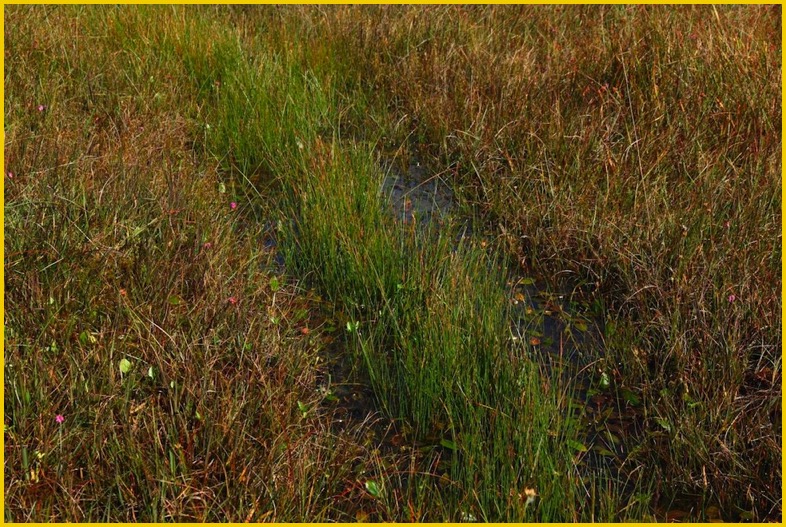
Eleocharis multicaulis, Greendale, Wasdale (Cumberland), August 2011
Use the linked "⇑" up-arrows with each topic header to get back here, or use the 'Top' button which appears in the lower-right corner when you're further down the page.
Links to all pages are at the bottom of the page.
➢ strongly tufted (unlike the other larger species), but can develop extensive patches through coalescing of individuals (as above)
➢ sheath apex obliquely truncate, so with a +/- acute point (unique in the larger species)
➢ spikelet narrow-ovoid; sometimes proliferous (unique in UK spike-rushes)
➢ lowest glume +/- encloses base of spikelet (approaches uniglumis and quinqueflora; unlike austriaca and palustris)
➢ ripe nut is distinctly 3-sided in section; style-base broad, with constriction, but not swollen, triangular in outline
➢ mires of various types, with some mineral influence; damp hollows on sandy heaths, etc.
Growth ⇑
~ strongly tufted (although plants can readily coalesce, so making ‘patches’)
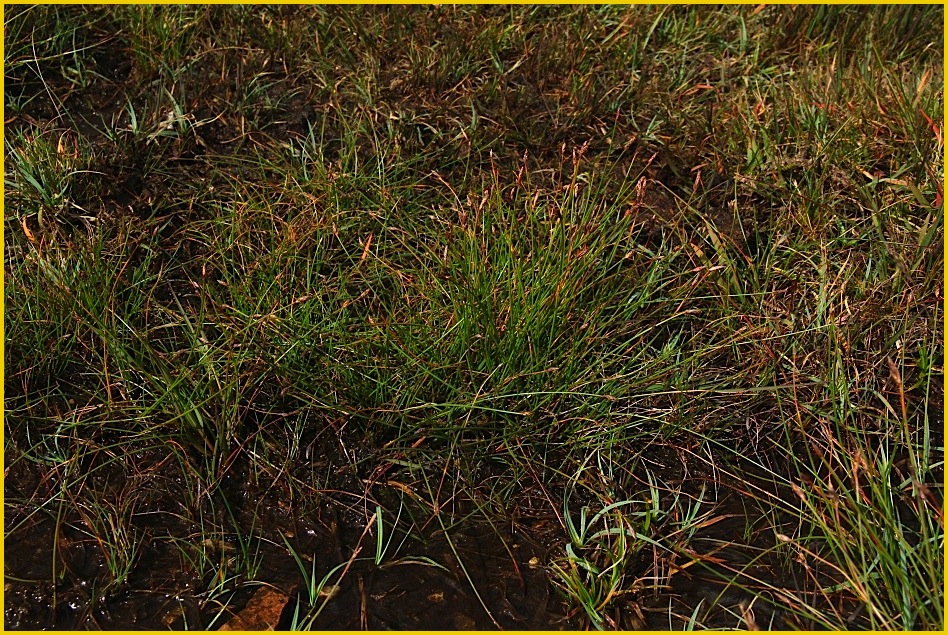
multicaulis - ‘sprawling’ plant in open gravelly runnel
multicaulis - more upright plants in peaty mire
Stems ⇑
~ stems generally fairly short – 15-30 cm, often flexuous; mid-green and shiny; red/purple-based or not
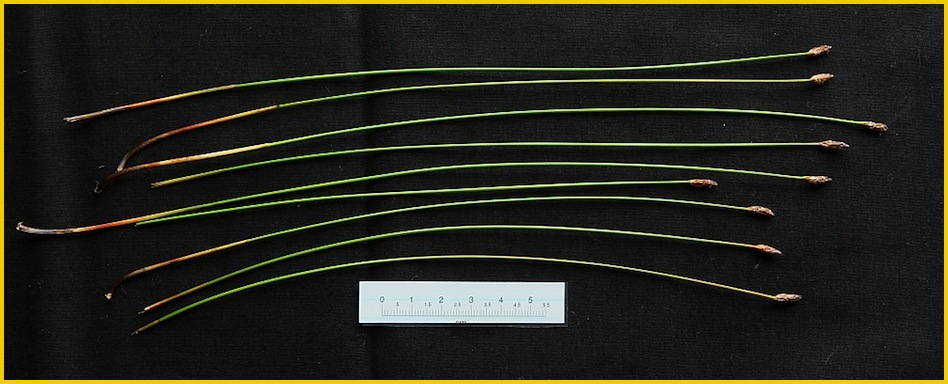
typical red-based stems (scale is 5 cm)
Sheath apex ⇑
~ sheath apex obliquely truncate, hence producing a +/- acute point:
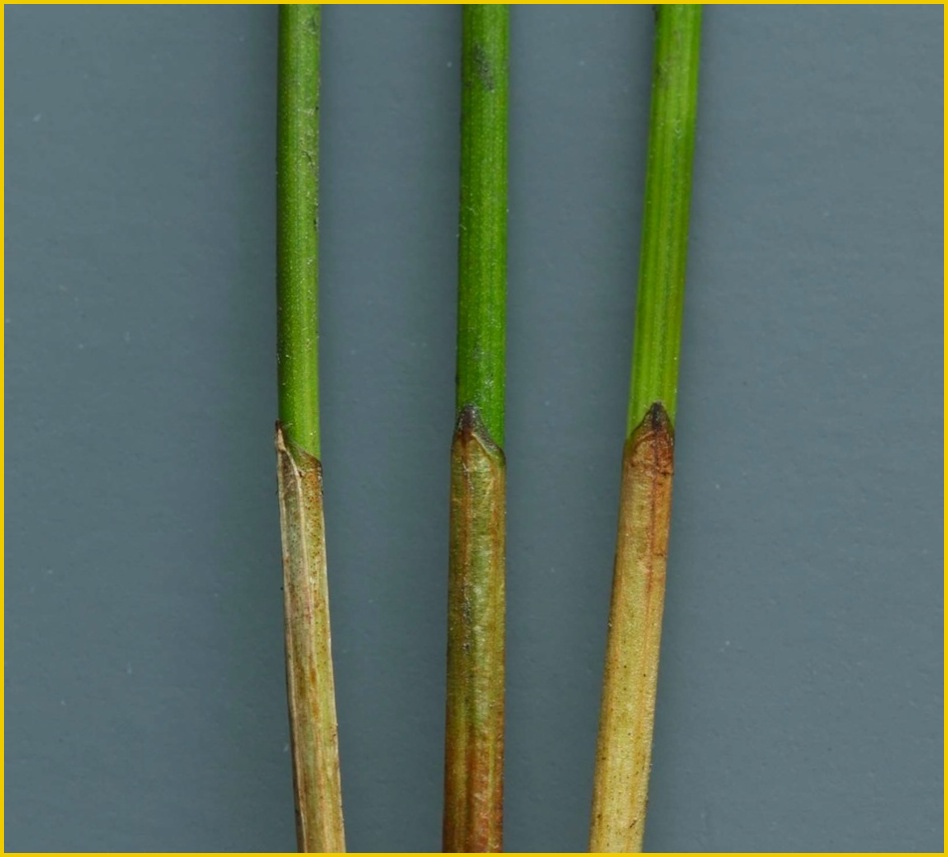
sheath-apex obliquely truncate...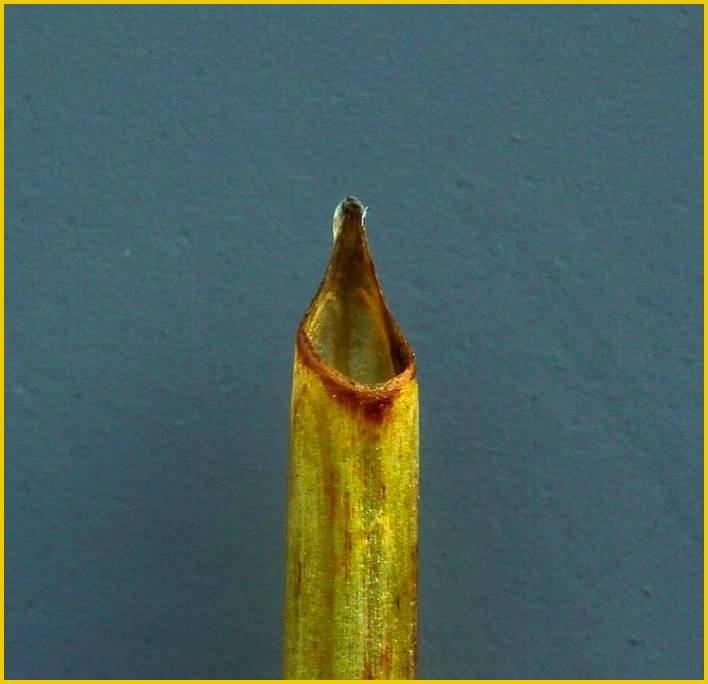
...making a +/- acute point (not always as pronounced as this)
Stem section ⇑
~ stems typically narrower than the ‘big two’ species (i.e. austriaca and palustris): 1.0-1.5 mm across, circular or somewhat flattened in section.
~ layers of green tissue are considerably deeper than in e.g. palustris and the central hollow correspondingly narrower.
~ abundant fibre-bundles, more frequent that in palustris.
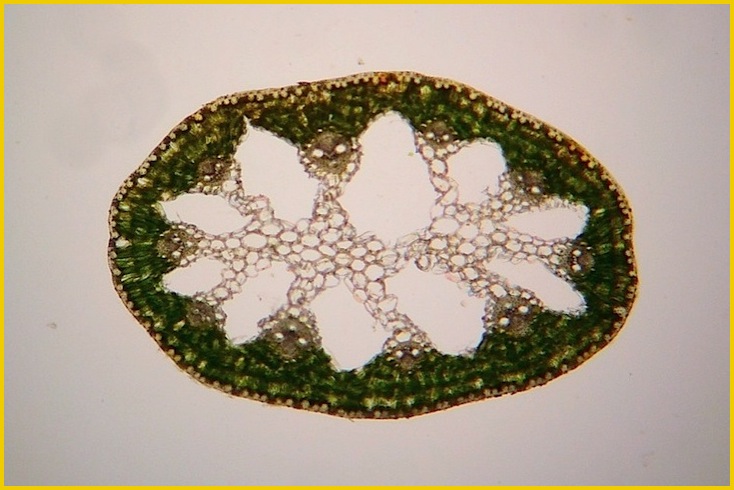
stem section
Epidermis ⇑
~ very distinctive: compared with palustris, fibre-bundles are more abundant, giving the impression of ‘sheets’; ranks of ‘ordinary’ cells are narrower, the rows carrying stomata in ‘single file’ flanked by single rows of much narrower cells. (Go to page ⇒ID:palustris/austriaca for wider discussion of epidermal peels. Describes technique to obtain peels.)
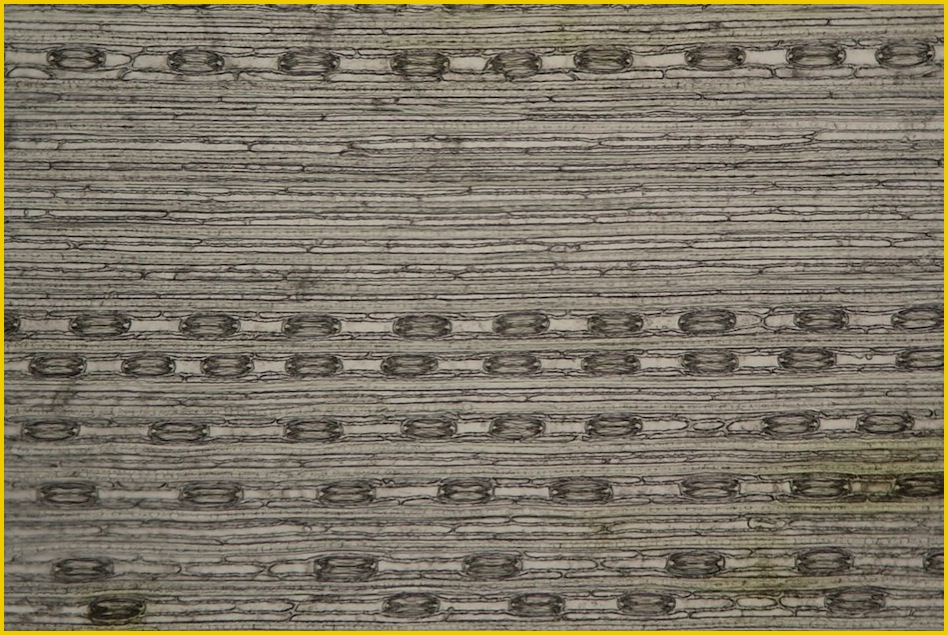
epidermal peel
Stomata ⇑
~ note convex ends to stomata, unlike palustris.
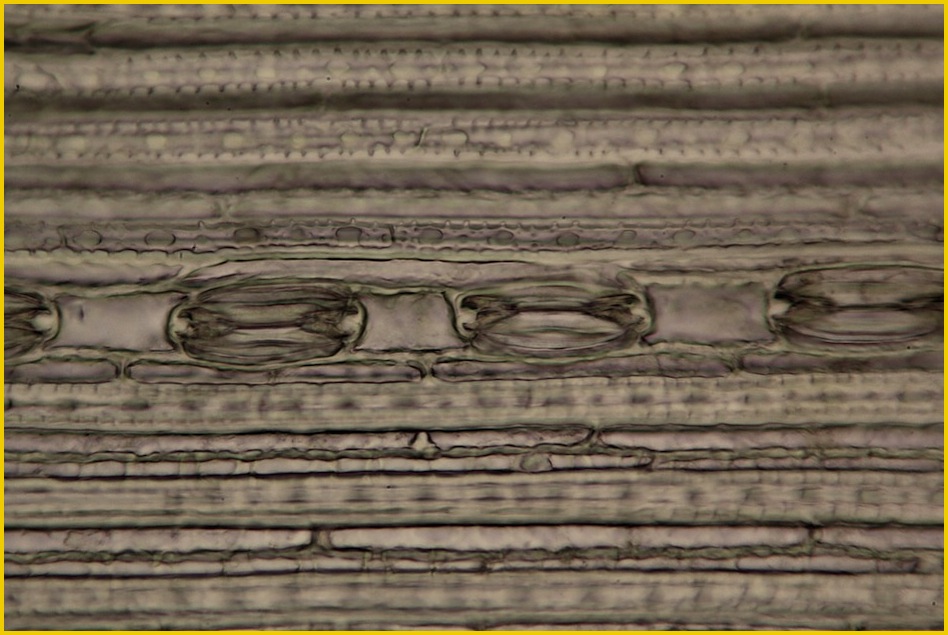
file of stomata with very narrow flanking cells, bounded by bundles of fibre-cells
Spikelets ⇑
~ oval-lanceolate or elliptical-ovoid; about 10-30 flowers; can be partly proliferous (unique in UK spike-rushes).
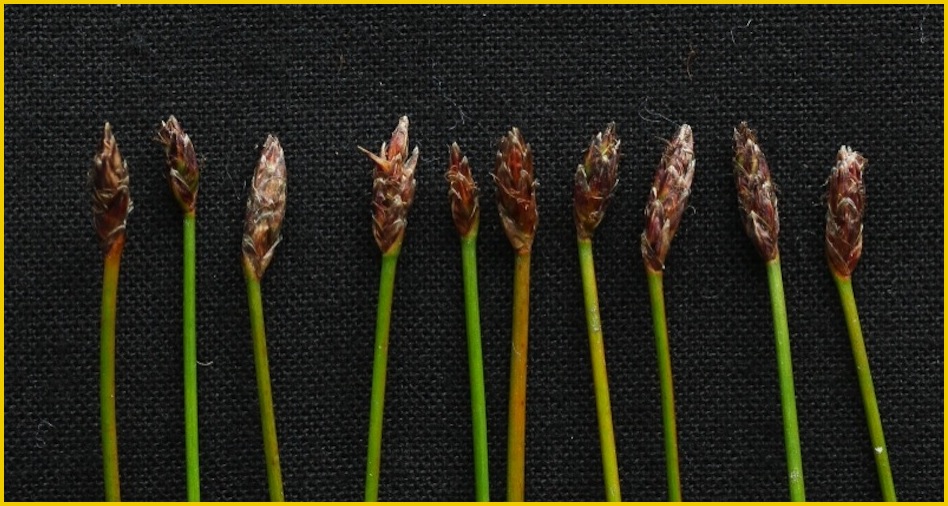
spikelets....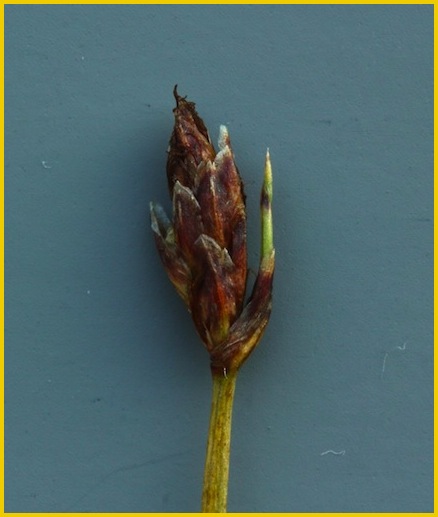
...in which some flowers may proliferate
Glumes ⇑
~ lowest glume +/- encloses base of spikelet (more than half), and is about a quarter the length of the spikelet. Can often be notched at its rounded apex.
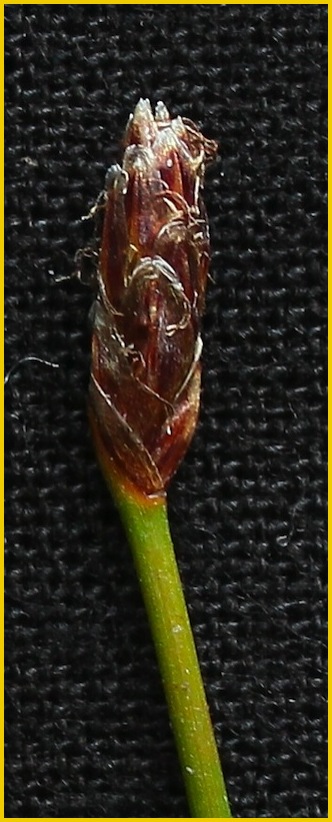
spikelet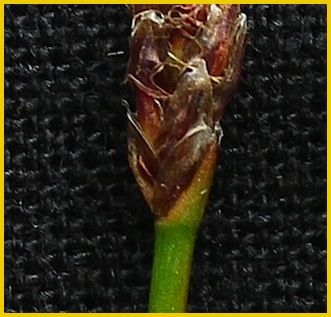
basal glume often notched at its rounded apex
Flowers ⇑
~ stigma 3-forked (as in the smaller species; contrast austriaca, palustris and uniglumis)
~ perianth bristles 4-6, usually longer than nut
Nuts
~ slightly narrower than the other larger species, the outline of the style-base accentuating the impression of narrowness
~ style-base (stylopodium) broad at the base, with a clear constriction at its junction with the nut, but not swollen, being low and rapidly narrowing above
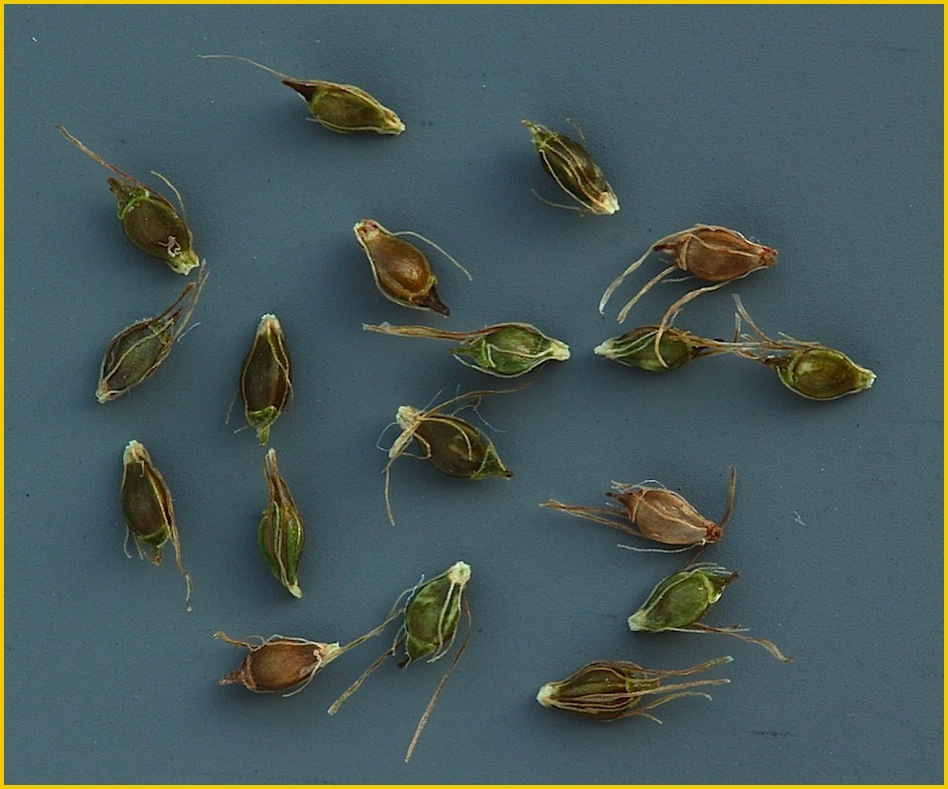
ripe nuts from the same spikelet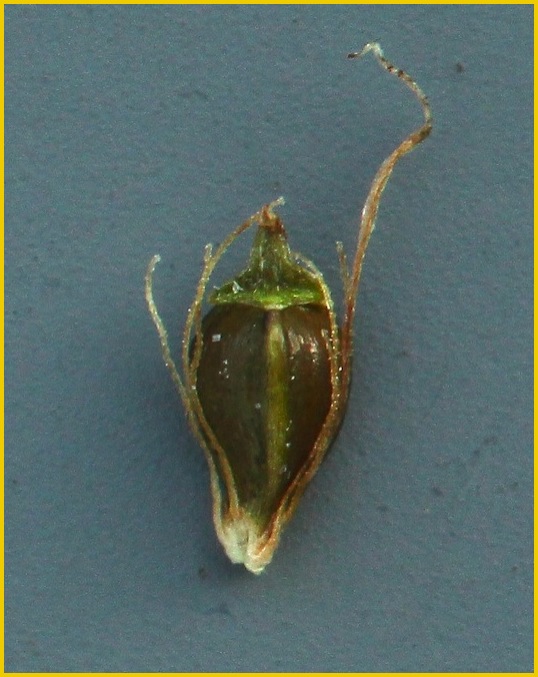
nuts from the same spikelet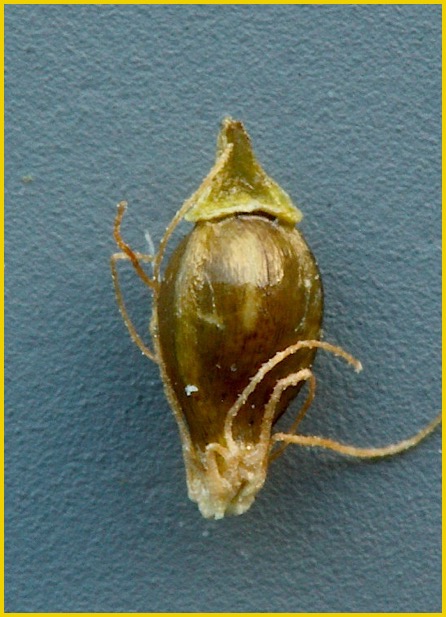
Habitat ⇑
~ mires with some mineral input; typical of runnels and small pools within basin mires; gravelly seepages on valley-sides; seasonally wet hollows in sandy heaths, etc.
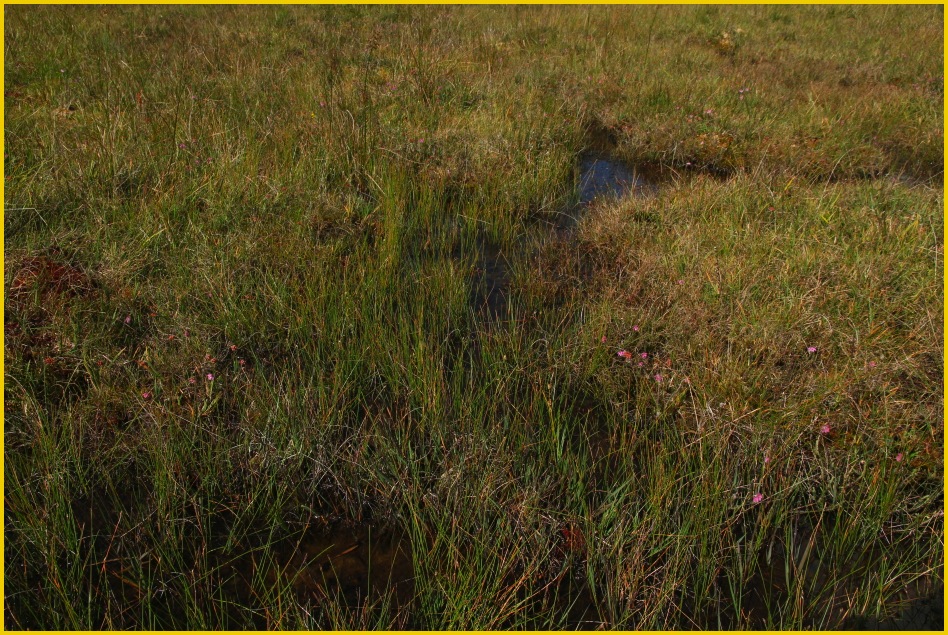
Greendale, Wasdale (Cumbria): multicaulis in small mire pools and drains (August 2011)
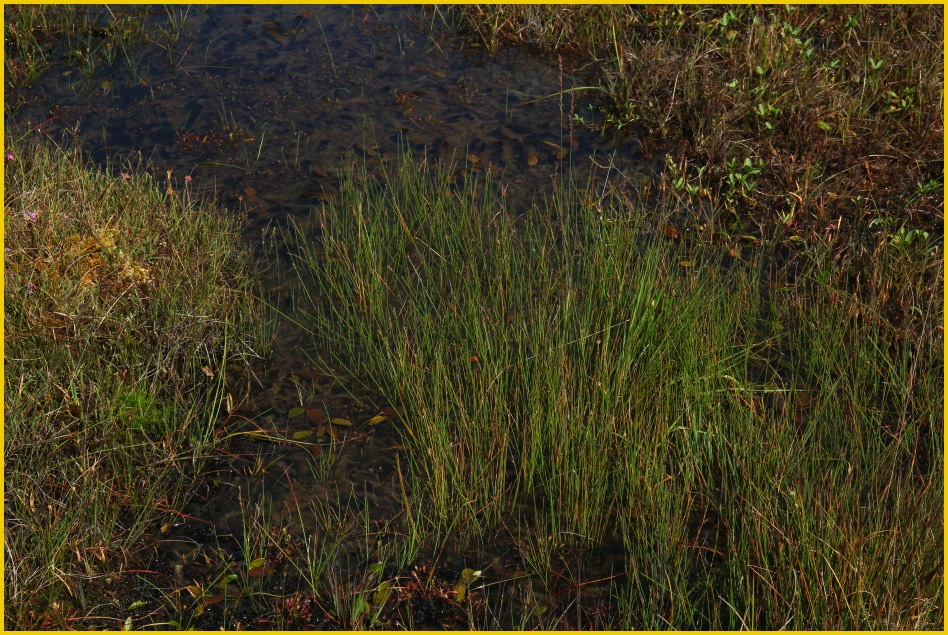
Frequency & range ⇑
~ widespread and frequent in damper areas, so especially in the west and north; scattered in the east. See ⇒distribution map.
Links to the other Eleocharis spike-rush pages (also accessible from the sidebar)
Species pages
Separation of similar pairs
Other information
